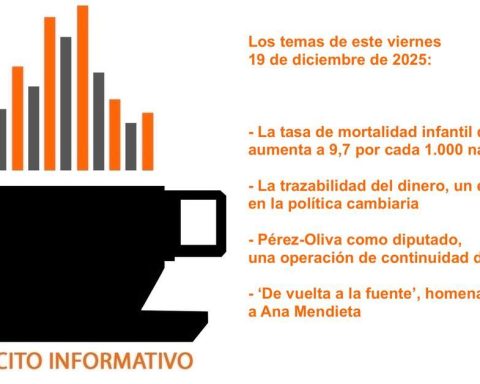Uruguay began to import energy from Brazil
“It is being imported in the order of 500 megawatts, which is the capacity of the converter in Melo,” reported the president of UTE.
Due to the drop in energy production from wind and hydraulic sources, UTE began this Sunday to import energy from Brazil, supplying a quarter of the demand generated in Uruguay.
Hydraulic generation in the country is being low
The rains of recent days have not improved the situation of the reservoirs or the dams of the Negro River [ni] Neither in Salto Grande, for which the wind energy production is very low and is used to cover some peaks in demand. Even today, the low wind production means that we are at 1% of the country’s total wind capacity, therefore, the thermal power plants are also on to provide the service, and energy import activities began yesterday of the country”, reported Silvia Emaldi, president of UTE, to Telemundo.
It is importing about 500 megawatts
The hierarch explained that “some 500 megawatts are being imported, which is the capacity of the converter in Melo.” The process of importing energy began on Sunday at zero hour, and at noon on Monday it stopped because Brazil is carrying out maintenance work on its transmission network, although Emaldi expects that imports will resume in the afternoon. “It is expected that throughout this week we will have offers from the neighboring country. This allows saving all or part of the thermal production in the country. This allows the costs to be of the order of half of what it is to produce thermal energy. In any case, the final result, week by week, we will evaluate it as we see which generation sources it replaced: if it replaced thermal, wind, as it would be happening at the moment, or any of the other sources”, said the president of the public company.
“We estimate a saving of about US$ 800,000 per day, if the forecasts we are making regarding the demand are given, which is also being a high demand these days, if we consider that the month of January 2023 had 5% more than in January 2023,” added Emaldi, who estimated that this growth in consumption is due to “the influx of tourists and a much more even summer than the previous year.”
Emaldi assured that UTE imports “in the order of 500 megawatts”, while “consumption in Uruguay is of the order of 2,000 megawatts at peak times”, so that what is imported represents “a quarter of the total energy of the peaks of the country.
The hierarch clarified that these changes do not imply changes in the price of energy for consumers. “No rate adjustment is planned,” said the head of UTE.

















